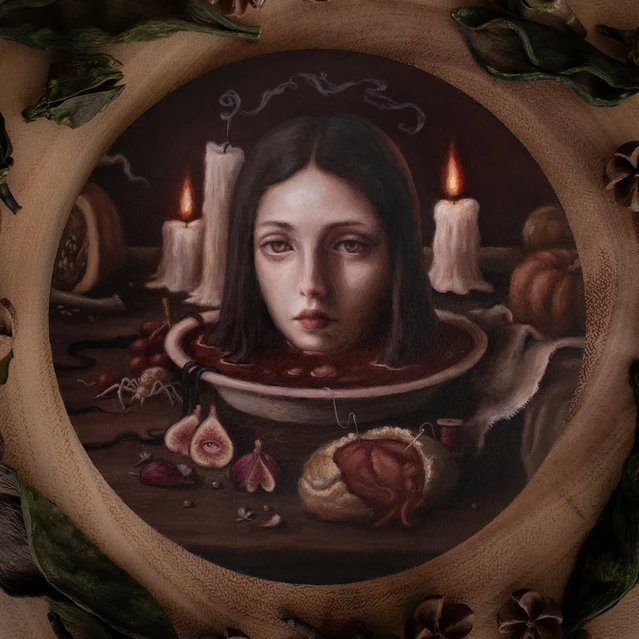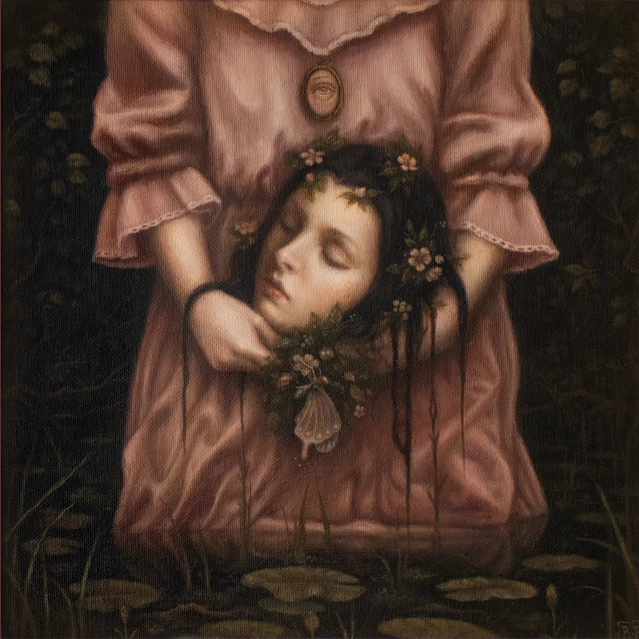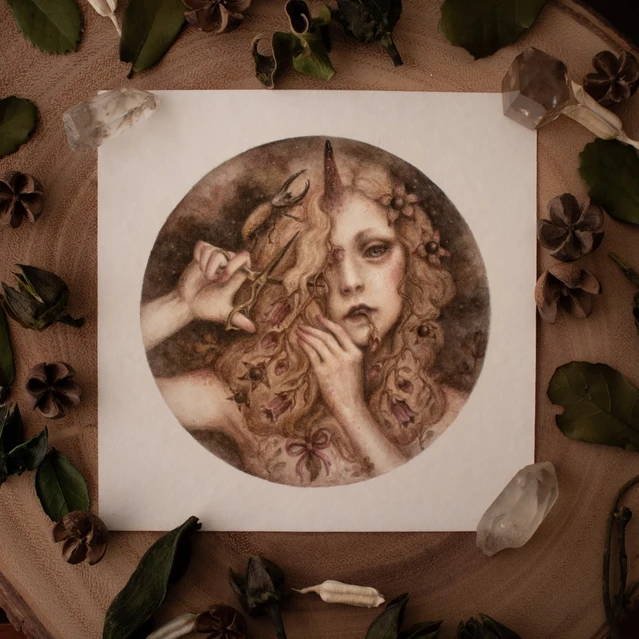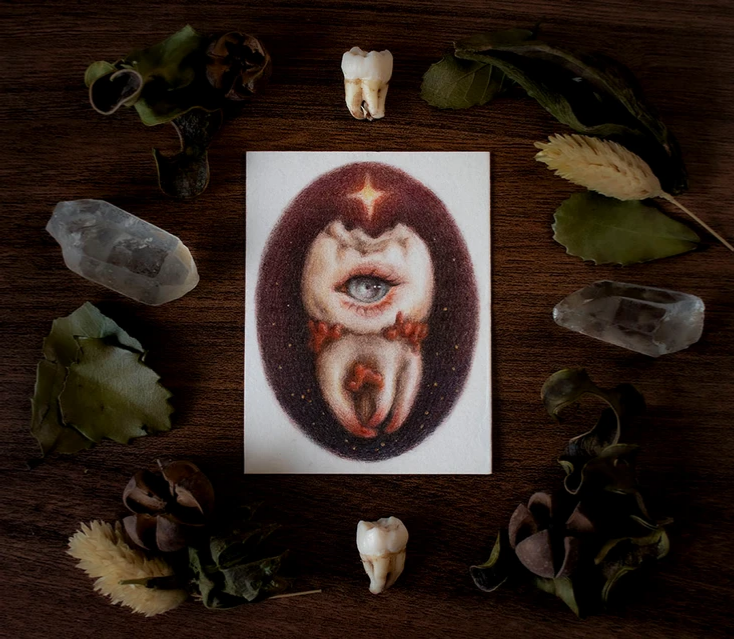b
Bea Bastet
The artwork of Beatriz Bradaschii contains a sweet surrealism. Flowers, insects, human teeth, and eyes all recur as symbols in a rich, gently melancholy world evocative of lore, both whimsical and macabre. Her Victorian-inspired, Wonderland-esque aesthetics, the imagery of a severed head, lacerated heart, exposed rib cage, carnivorous flowers, or pox-ridden countenances of haunting beauty, are rendered in a precious style, and speak of emblems of particularly feminine horror, as well as the terrors of childhood. Her highly imaginative, cunningly layered sculptures are also incredible – including Memento Mori Mushroom, which features a detachable face revealing a skull hidden behind it. I have one of her lovely clay pins, hand-painted in acrylic and gouache.



